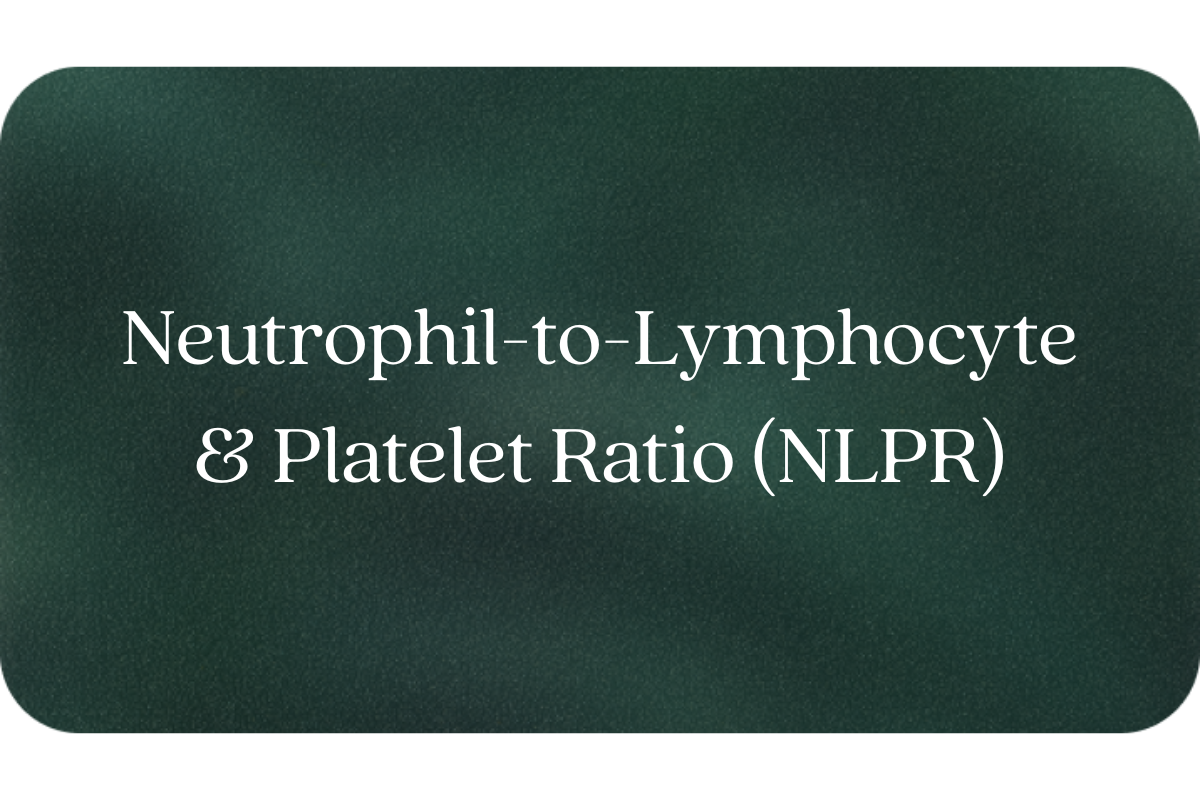What is NLPR?
NLPR stands for Neutrophil-to-Lymphocyte & Platelet Ratio. It’s a derived value calculated from a standard full blood count:
NLPR = (Neutrophil count ÷ Lymphocyte count) × Platelet count
It captures the interplay between neutrophils (innate immune activation), lymphocytes (adaptive immune capacity) and platelets (which also play roles in inflammation and repair).
Why does it matter for long-term health and wellbeing?
While routine blood counts tell you absolute numbers of each cell type, NLPR offers a deeper lens into immune-metabolic resilience. For example, a slightly elevated NLPR might signal a state of low-grade inflammation or immune imbalance, which can influence recovery from exercise, metabolic flexibility, and ultimately your capacity to maintain energy levels and performance over time. Studies show that markers like the neutrophil-lymphocyte ratio (NLR) and platelet-lymphocyte ratio (PLR) are linked to broader immune-inflammatory signalling. By tracking NLPR you gain a proactive insight into your immune-metabolic system—and so you can act early, rather than wait for symptoms to appear.
What’s an optimal level of NLPR?
There is not yet a universally agreed “normal” range for NLPR, especially in healthy, proactive screening populations. For reference, healthy adult NLR values have been reported around 0.78 to 3.53. Based on emerging research and practical wellness-coaching experience, a suggested Australian-context reference might be:
- Reference range low: ~ 0.5
- Reference range high: ~ 4.0
- Optimal range low: ~ 0.8
- Optimal range high: ~ 2.5
(Units: this is a dimensionless ratio derived from cells/ L)
Because platelets elevate the combined ratio, your lab may report NLPR in slightly different units—always compare with your previous result to see direction of change.
What influences NLPR levels?
A range of lifestyle and physiological factors can influence NLPR:
- Training load, recovery status, and sleep quality (which influence neutrophils, lymphocytes and platelets)
- Nutritional status (e.g., micronutrient sufficiency, protein intake, anti-inflammatory foods)
- Stress and neuro-immune signalling (chronic stress may shift immune ratios)
- Body composition and metabolic health (inflammation tends to track with adiposity, insulin resistance)
- Acute factors such as infection, injury or recent surgery—even without symptoms—may shift the ratios upward temporarily
What does it mean if NLPR is outside the optimal range?
If your NLPR is above the optimal range (for example > 2.5), it may indicate that your immune-metabolic system is under subtle elevated activation or imbalance—even if you feel well. In wellness terms, this suggests an opportunity: your recovery may benefit by tuning down certain stressors (training load, nutrition, sleep) and supporting immune balance.
If it's below optimal (for example < 0.8, depending on your baseline), it could reflect too little immune activation or an over-suppressed state—again worthy of lifestyle adjustment (ensuring quality nutrition, adequate recovery, immune-supportive habits). Because this is a wellness marker—not a diagnostic test—focus is on trend, context and what you can change.
How can I support healthy NLPR levels?
- Ensure regular, high-quality sleep (7–9 hours for most adults) and include recovery practices (e.g., light movement, stretching, meditation)
- Balance training intensity and volume with recovery: avoid chronic high load without adequate rest
- Prioritise nutrient-dense whole foods, including lean protein, fibrous vegetables, healthy fats and minimise excess refined carbohydrates
- Manage stress proactively (via mindfulness, breathing, social connection) to support balanced immune signalling
- Maintain a healthy body composition and metabolic profile—regular movement plus strength training can support this
- Stay hydrated and avoid lifestyle factors that chronically elevate platelets or neutrophils (e.g., poor sleep, unmanaged stress, smoking)
This information is provided for general health and wellness purposes only and does not replace medical advice.
References
- Zulfic, Z. (2020). Neutrophil–lymphocyte ratio – a simple, accessible marker of systemic inflammation. Australasian Psychiatry (Narrative Review).
- Zinellu, A., Mangoni, A. A. (2023). Neutrophil-to-lymphocyte and platelet-to-lymphocyte ratio and disease activity in rheumatoid arthritis: A systematic review and meta-analysis. European Journal of Clinical Investigation, 53(2), e13877.
- Saghud, M. (2023). The associations of neutrophil–lymphocyte, platelet–lymphocyte ratios and the systemic immune-inflammation index with immune-metabolic signalling: Biomolecules, 13(2), 297.




















.png)
